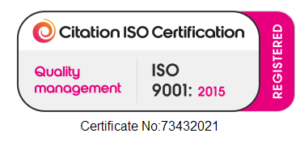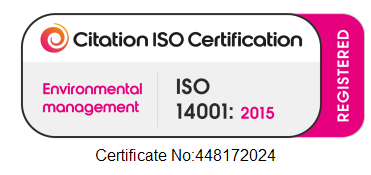Social media is a vital marketing channel for businesses of all sizes. The common question a few years ago, “why should our business use social media?”, is now being replaced with, “how can our business grow with social media marketing?”.
As a social media marketer, this makes me very excited. What doesn’t make me excited is how many businesses are still trying to market on social media without a documented strategy. In this post, you will learn the seven steps your business must take to create an effective social media marketing strategy.
Step 1: Audit Your Current Social Presence
“Know thyself. Know the customer. Innovate.” – Beth Comstock
Before you strategize about where you are headed, take a quick look at where you are. A few areas to consider when auditing your business’s social media presence are:
- Which networks are you currently active on
- Are your networks optimized (photo and cover images, bio, URL, etc.)
- Which networks are currently bringing you the most value
- How do your profiles compare to your competitors’ profiles
We offer a total online presence audit that includes a deep analysis of your social media, content, SEO, and web structure with a presentation of key priorities and recommended plan – Check out our Total Online Presence Audit.
Step 2: Document Who Your Ideal Customer Is
“The aim of marketing is to know and understand the customer so well the product or service fits him and sells itself.” – Peter Drucker
You will want to get as specific as possible with this part. For example, if you identified your target market as parents it would be ok. However, if you identify your ideal customer as a parent that lives in the United States, is between 30 and 50 years of age, earns over $70,000, primarily uses Facebook and has an interest in outdoor activities you will have much more success.
Even the best marketers will fail if they are marketing to the wrong audience. Answer the following questions to help you come up with a highly focused buyer
- persona:
- Age
- Location
- Job Title
- Income
- Pain Points (that your business can solve)
- Most Used Social Network
Step 3: Create A Social Media Mission Statement
“What makes you weird, makes you unique and therefore makes you stand out.” – Dan Schawbel
Your social media mission statement will drive your future actions, so make sure you put some thought into it. This statement will make it clear exactly what you plan to use your social media presence for and should reflect your brand identity. Keep in mind your ideal customer when trying to create this statement.
An example mission statement might be “to use social media to educate current and potential customers about digital marketing, with a focus on social media marketing.” Once you have this statement documented, it will make it simple for you to decide what to share and create.
If it doesn’t align with your mission statement, forget about it. Businesses that post randomly without a guiding mission will fail. People follow experts, not generalists.
Step 4: Identify Key Success Metrics
“If you cannot measure it you cannot improve it.” – Lord Kelvin
How will you determine if your social media marketing efforts are successful? I am not just talking about gaining more followers, I am talking about making money. After all, it is hard to rationalize spending time and money on something that isn’t improving the bottom line.
A few metrics to consider measuring are:
- Conversion Rate
- Time Spent on Website
- Reach
- Brand Mentions
- Sentiment
- Total Shares
Step 5: Create and Curate Engaging Content
“Content is where I expect much of the real money will be made on the Internet.” – Bill Gates
Sadly, many businesses jump straight to this step. Hopefully, this post has made it clear that there are several vital steps that you must take before you start creating and curating engaging content to share on your social media channels.
Let’s now discuss the fun part, posting to social media. You know who your ideal customer is and you used that information to create your social media mission statement. Armed with this information it should be easy for you to begin creating and curating content. So, what exactly is considered content? Here are a few
examples of content you could create:
- Images
- Videos
- Blog Posts
- Company News
- Infographics
- eBooks
- Interviews
The list of content ideas goes on and on, but make sure you focus only on forms of content that align with your mission statement, as well as your skill set. Content is what fuels social media, so it is crucial that you consider creating high quality, engaging content as a top priority.
I strongly recommend that you create a content calendar that outlines how often you will post to each network, which topics you will share and when you will share them.
Step 6: Invest In a Social Media Management Tool
“We live in times in which ordinary people can do amazing things using the right tools”
Most marketers have a secret, they leverage tools to boost their productivity. Ok, maybe it isn’t a secret, but without tools, marketers would face constant burnout (many do even with tools). When it comes to social media, having a social media management tool allows you to scale your efforts with ease.
One of the main benefits of a social media management tool is the ability to schedule posts ahead of time. Remember that content calendar you created? Make sure your scheduled posts in your social media management tool align with your content calendar.
Step 7: Track, Analyse, Optimize
“If you torture the data long enough, it will confess to anything.” – Ronald Coase
This may be the most important step when it comes to succeeding on social media. Even the best social media marketers rely on trial and error. It might seem basic, but tracking your results, analysing the data and then making tweaks to optimize them is crucial.
Each previous step should be re-evaluated after you have had time to analyse the results of your marketing efforts. Let the data drive you. If it is telling you Facebook or Twitter is your most effective channel, consider doubling down.
A great social media strategy is never set in stone. It is a constant work in progress that changes when necessary. So get out there, create a strategy and start optimizing it as you continue to grow and learn more about your business and your audience.
Need a proven small business marketing speaker for your next workshop, conference or event?
Source: Duct Tape Marketing










